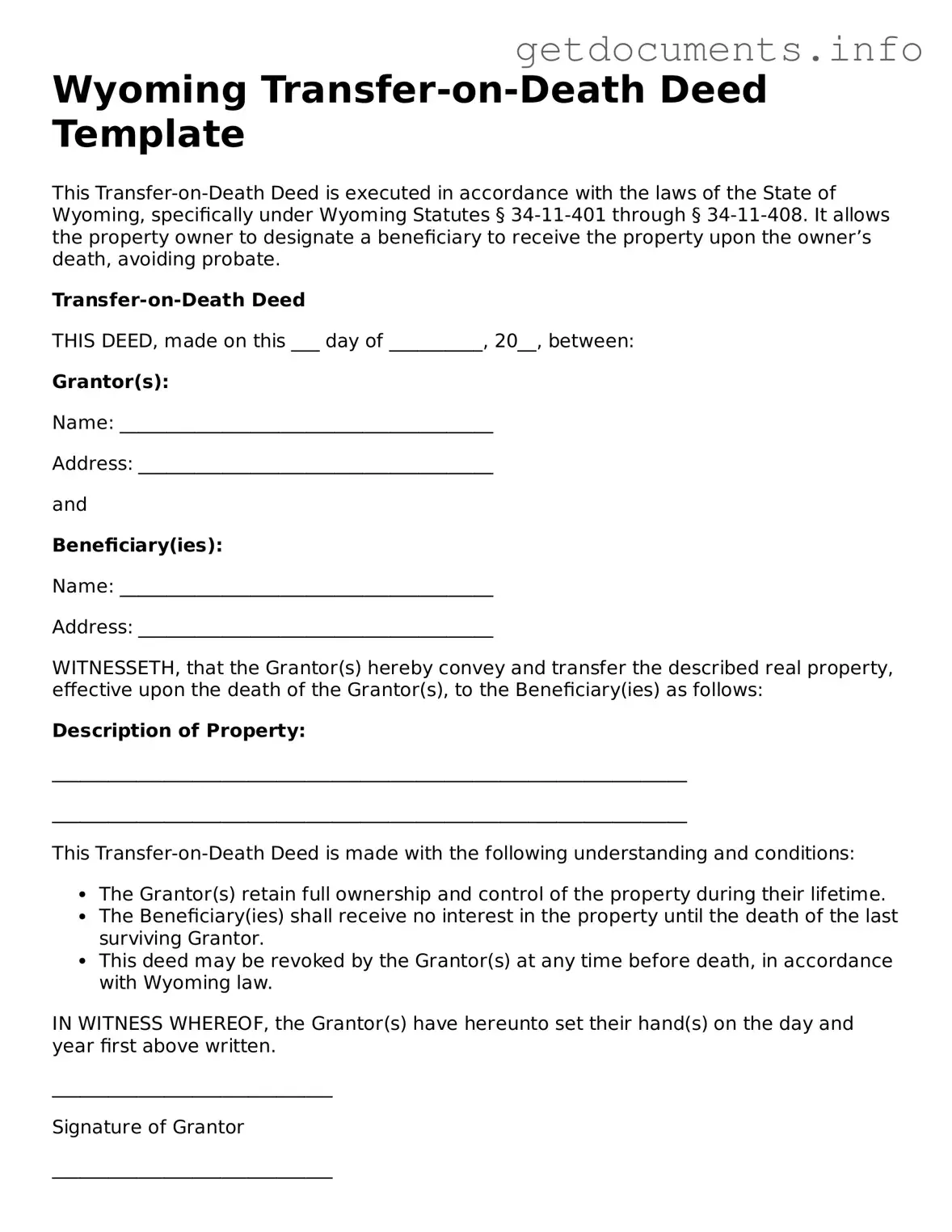Understanding the Wyoming Transfer-on-Death (TOD) deed can be challenging, especially with the number of misconceptions that often arise. Here are ten common misconceptions, along with clarifications to help demystify this important legal tool.
- Misconception 1: The TOD deed avoids probate entirely.
While the TOD deed allows for the direct transfer of property upon death, it does not completely eliminate the probate process for other assets or debts that may need to be settled.
- Misconception 2: A TOD deed is only for real estate.
Many believe that the TOD deed applies solely to real estate. In fact, it specifically pertains to real property, but other forms of transfer-on-death arrangements exist for different asset types.
- Misconception 3: The property automatically transfers without any action.
Some people think that a TOD deed ensures an automatic transfer without any formalities. However, the beneficiary must still take steps to claim the property after the owner’s death.
- Misconception 4: A TOD deed can be revoked only in court.
Contrary to this belief, a TOD deed can be revoked by the owner at any time before their death, simply by executing a new deed or a formal revocation document.
- Misconception 5: The beneficiary has immediate rights to the property.
Many assume that beneficiaries gain immediate rights to the property upon the owner’s death. In reality, they must wait until the owner’s death and complete the necessary legal steps to transfer ownership.
- Misconception 6: A TOD deed is the same as a will.
Some confuse the TOD deed with a will. While both documents deal with the transfer of property, a TOD deed functions differently and takes effect immediately upon the owner's death, bypassing the will's probate process.
- Misconception 7: You can only name one beneficiary.
It is a common belief that only one beneficiary can be named on a TOD deed. In fact, multiple beneficiaries can be designated, allowing for more flexibility in estate planning.
- Misconception 8: A TOD deed is permanent and cannot be changed.
Some people think that once a TOD deed is created, it cannot be altered. However, the owner retains the right to modify or revoke the deed at any time before their death.
- Misconception 9: The TOD deed protects the property from creditors.
There is a misconception that the TOD deed shields the property from creditors. In reality, the property may still be subject to claims by creditors, even after the owner's death.
- Misconception 10: All states have the same rules regarding TOD deeds.
Lastly, many assume that TOD deed regulations are uniform across all states. Each state, including Wyoming, has its own specific laws and requirements governing the use of TOD deeds.
